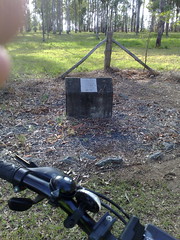Courtenay Spry was one of the first owners of freehold land in this area, along with Tom Petrie, Stephen Lawn and others.In 1862 he purchased large tracts of land, and sold some of it a short time later to make a handsome profit.
But this amusing little excerpt from the Brisbane Courier in 1882, reveals a nasty side to Mr Courtenay Hele Fowell Spry Esquire. It appears that one of his sons had an impressive butcher bird that was able to sing quite remarkable tunes. The bird went missing, and Spry suspected the daughter of the local pastoralist, Job Minchinton. He sued Minchinton in the Brisbane Police Court for the loss of the bird, but Minchinton testified that he never had a butcher bird, or any bird except a parrot.
Spry lost the suit, but not being one to let his inferiors off the hook, then decided that Minchinton didn’t tell the truth in court. So he had him charged with perjury, and had his sons to testify against him. Courtenay’s son, Reynell, testified that on 27 May 1882 he saw a butcher bird on Minchinton’s verandah and knew it was the stolen bird because of the tune it was whistling. Mr Bruce, the defense lawyer cross examined him:
Bruce: “If you remember the tune the bird was whistling, can you whistle it?”
Reynell: “No.”
Bruce: “Who was the composer of the tune?”
Reynell: “The butcher bird was the composer”
Bruce: “How can you be so certain about the date?”
Reynell: “I don’t know”
Bruce: “Well if you’re so good with dates, can you tell me what month the winter holidays were in, this year?”
Reynell: “No”
Bruce: “How about your birthday? Can you tell me what month your birthday is in?”
Reynell: “No”.
Because of Spry’s power and influence, the judge didn’t accept the defence claim that the case should be thrown out. He wanted to give the appearance of actually considering this weighty case. But after a few minutes deliberation, he announced that he had decided to dismiss the case, and discharged Minchinton.
If you’re interested in much ado about nothing, click on the images at the left to read it yourself.






























